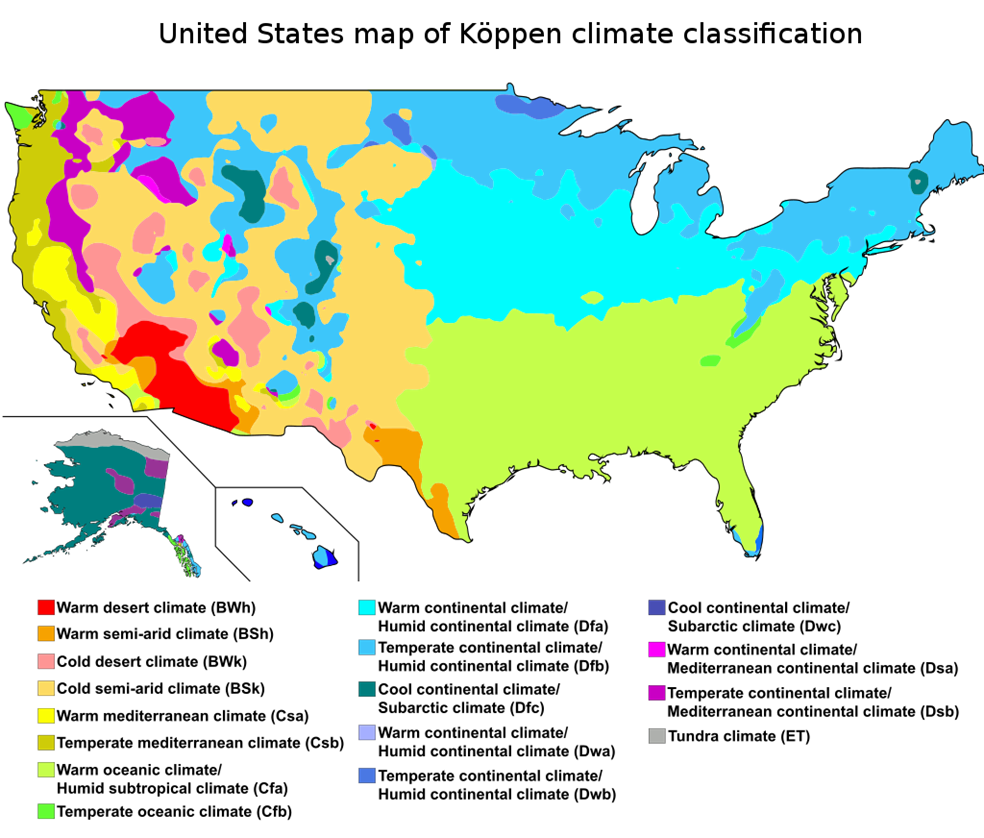Post written by Emily Bohr, Outreach Specialist for the Office of Environmental and Energy Coordination
“Weather” and “Climate” are terms that are sometimes used interchangeably, but they are two distinct concepts. Understanding the difference between weather and climate can help you understand the broader patterns and changes that occur in our environment, and why they matter.
What Weather Means
The term “weather” refers to the day-to-day conditions that we experience, such as daily high and low temperatures, precipitation and storm events, or humidity. These are the conditions that you’ll hear about on the TV or when you open the Weather app on your phone. Weekly forecasts and individual storm, heat or cold events are also included in the “umbrella” (pardon the pun!) term of weather.
Another important aspect of weather is that it’s always changing because the atmospheric conditions that influence the weather are always changing. This is why Fairfax County can be 26 degrees and snowy one morning and then 50 degrees and sunny that same afternoon.
.png)
What Climate Means
The term “climate” refers to the typical meteorological conditions an area experiences, based on statistical averages across 20 years or longer. Climate encompasses data that tells us about the average amount of precipitation, temperatures, or storm intensity and how those event trends change over time.
This can explain why it’s possible to experience a super cold week, even though you’re hearing that global temperatures are rising.
- The “cold week” is a weather event that takes place over the course of multiple days, while
- The “temperature rising” is an overall shift in climate, occurring over the course of multiple decades.
These averages also determine what type of climate a region has—tropical, sub-tropical, dry, polar, or other types of climates. When learning about climate, you’ll notice that the concept is often visualized through maps or charts. One such map is called the Koppen climate classification, shown in the figure below, which shows the different climates present in the Unites States.
Fairfax County has a “humid sub-tropical climate” because historically, we have had moist, warm summers that average in the 80s (F), cool winters, and precipitation that is relatively evenly distributed throughout the year. Other regions have different climate types because they have different norms for their temperature, precipitation, humidity, and more.

Even though you may see reports of a “record-setting” temperature or see that a particular day is the hottest or coldest “in history,” it’s important to note that this event is not an indicator of climate change on its own. We can find reports from decades ago where extreme weather events like this happened.
But, stay with me here, these "record-setting" events are more and more likely to happen. The 20, 40, and even 60 years of data about our weather is what’s clueing us into how our climate is changing and telling us that we can expect more extremes. The increasing amount of “record-setting” (re: hazardous) weather events is the climate change indicator.
Why This Matters
For most of Fairfax County history, our climate has been relatively stable. However, in recent decades, our climate has seen a measurable shift, and this shift can also be seen on a global scale. Since the average atmospheric conditions are shifting, the day-to-day weather events are shifting along with them.
Here in Fairfax County, the changing climate has resulted in what OEEC calls, “warmer, wetter, and weirder” conditions – things like frequent heat waves, stronger storms, heavier rainfall events, and rising sea levels. (Note: If you want to view charts that show Fairfax County’s increasingly warmer, wetter, and weirder climate, visit our Overall Resilience Metrics page.)
In the coming decades, many of these climate hazards are projected to increase in frequency and intensity and will continue to impact people, infrastructure, and services.
How Fairfax County is Addressing the Effects of Climate Change
Fairfax County is working to do our part to address both the cause and the effects of climate change. As part of our commitment to proactively working to address climate change and prepare for future impacts, Fairfax County has developed a climate adaptation and resilience plan – Resilient Fairfax. This plan helps us identify how to better prepare and reduce risk to climate change impacts for county residents, businesses, and infrastructure.
Fairfax County also recognizes that vulnerable community members are disproportionately impacted by climate change. For more information on climate vulnerabilities, see the Climate Vulnerability and Risk Assessment (VRA).
What You Can Do
- Check out Resilient Fairfax Plan and resources
- Explore the Overall Resilience Metrics webpage
- Take actions on the Resiliency Checklist
Emily Bohr has served as OEEC's outreach specialist since 2022, supporting the office’s communications and public outreach. She holds a degree in Environmental Studies from George Mason University.
Climate Matters is the blog of Fairfax County’s Office of Environmental and Energy Coordination, where we share stories, insights and information related to climate change and environmental sustainability. Posts are written by knowledgeable and passionate OEEC staff members and guest authors. To read all blog posts, visit Climate Matters.

